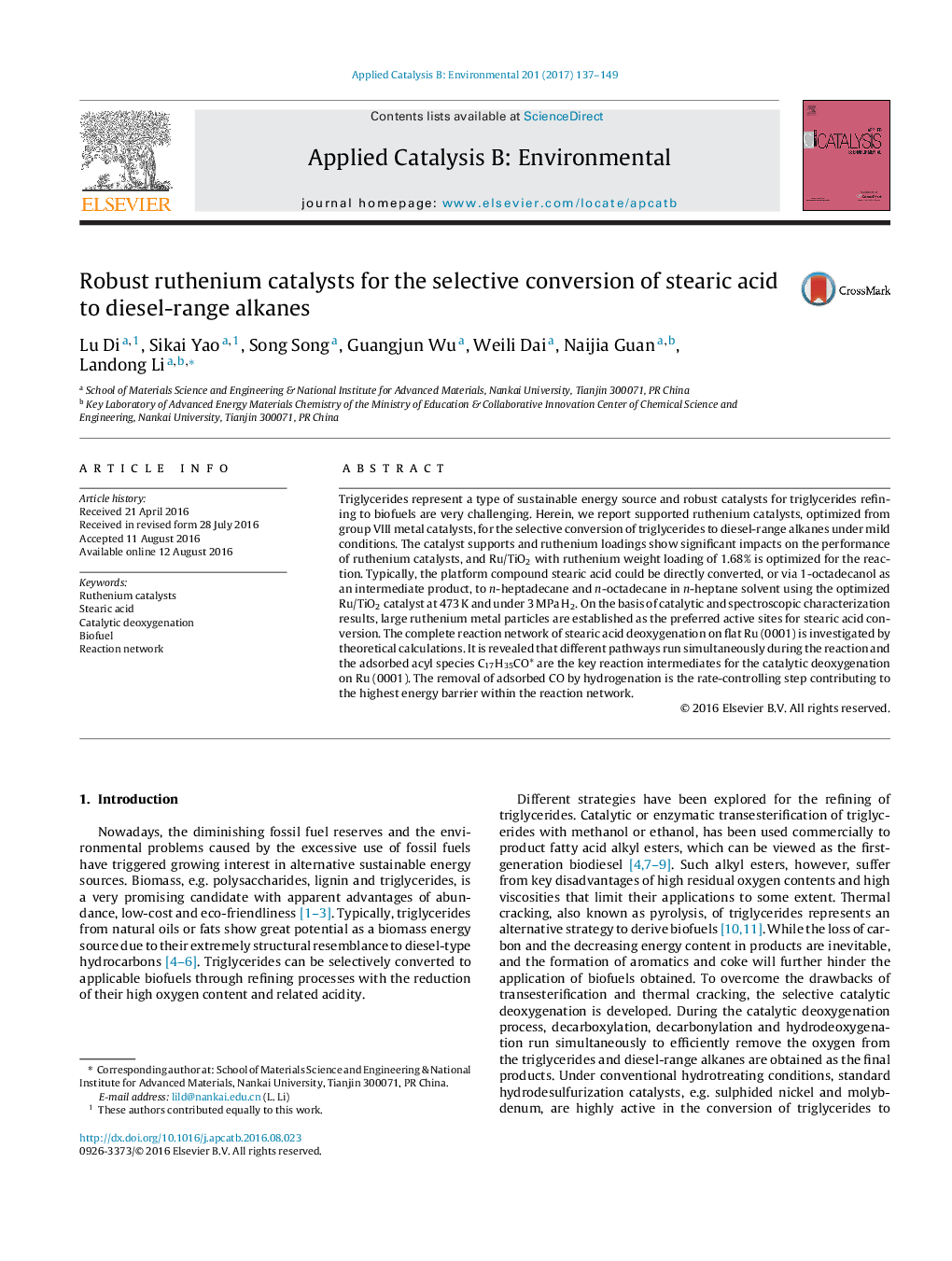| کد مقاله | کد نشریه | سال انتشار | مقاله انگلیسی | نسخه تمام متن |
|---|---|---|---|---|
| 6454965 | 1418819 | 2017 | 13 صفحه PDF | دانلود رایگان |
- Ru/TiO2 as a robust catalyst for the deoxygenation of stearic acid under mild conditions.
- Large metallic ruthenium particles with weak metal-support interaction established as preferred active sites for deoxygenation.
- Stearic acid deoxygenation pathway constructed via the combination of experimental observations and theoretical calculations.
Triglycerides represent a type of sustainable energy source and robust catalysts for triglycerides refining to biofuels are very challenging. Herein, we report supported ruthenium catalysts, optimized from group VIII metal catalysts, for the selective conversion of triglycerides to diesel-range alkanes under mild conditions. The catalyst supports and ruthenium loadings show significant impacts on the performance of ruthenium catalysts, and Ru/TiO2 with ruthenium weight loading of 1.68% is optimized for the reaction. Typically, the platform compound stearic acid could be directly converted, or via 1-octadecanol as an intermediate product, to n-heptadecane and n-octadecane in n-heptane solvent using the optimized Ru/TiO2 catalyst at 473Â K and under 3Â MPa H2. On the basis of catalytic and spectroscopic characterization results, large ruthenium metal particles are established as the preferred active sites for stearic acid conversion. The complete reaction network of stearic acid deoxygenation on flat Ru (0001) is investigated by theoretical calculations. It is revealed that different pathways run simultaneously during the reaction and the adsorbed acyl species C17H35CO* are the key reaction intermediates for the catalytic deoxygenation on Ru (0001). The removal of adsorbed CO by hydrogenation is the rate-controlling step contributing to the highest energy barrier within the reaction network.
182
Journal: Applied Catalysis B: Environmental - Volume 201, February 2017, Pages 137-149
